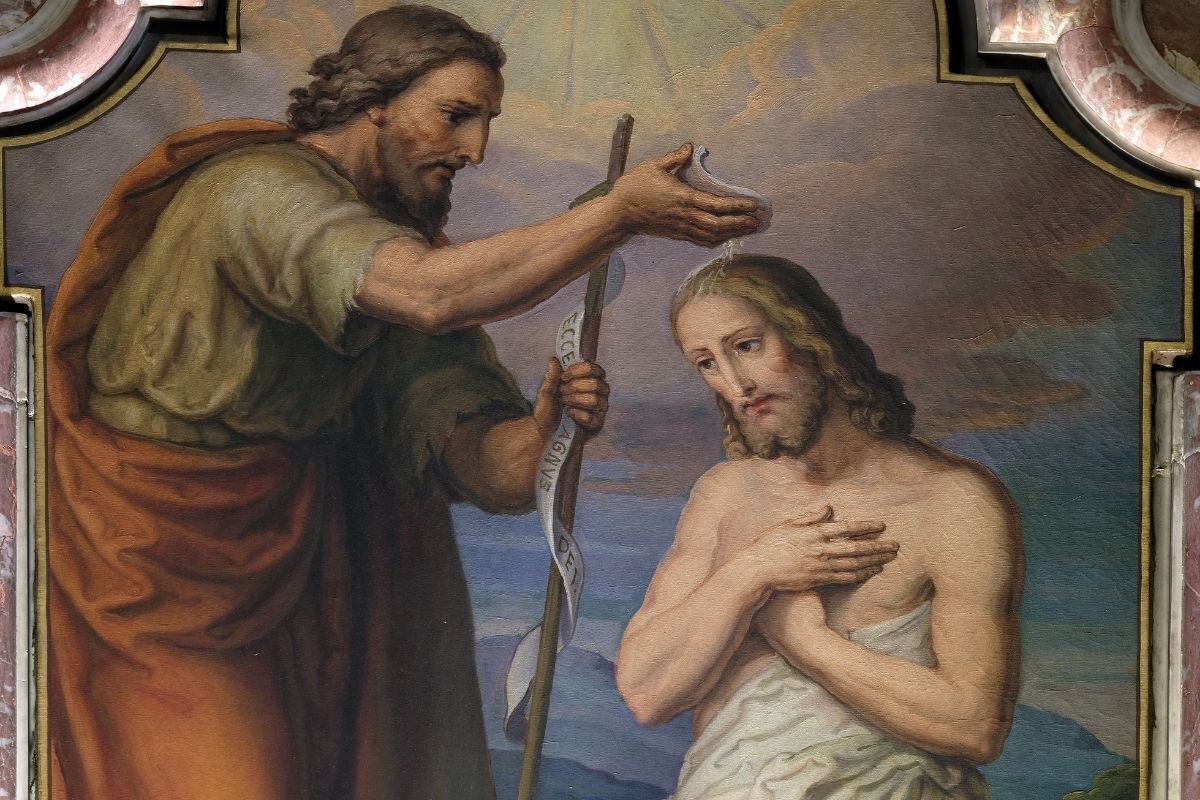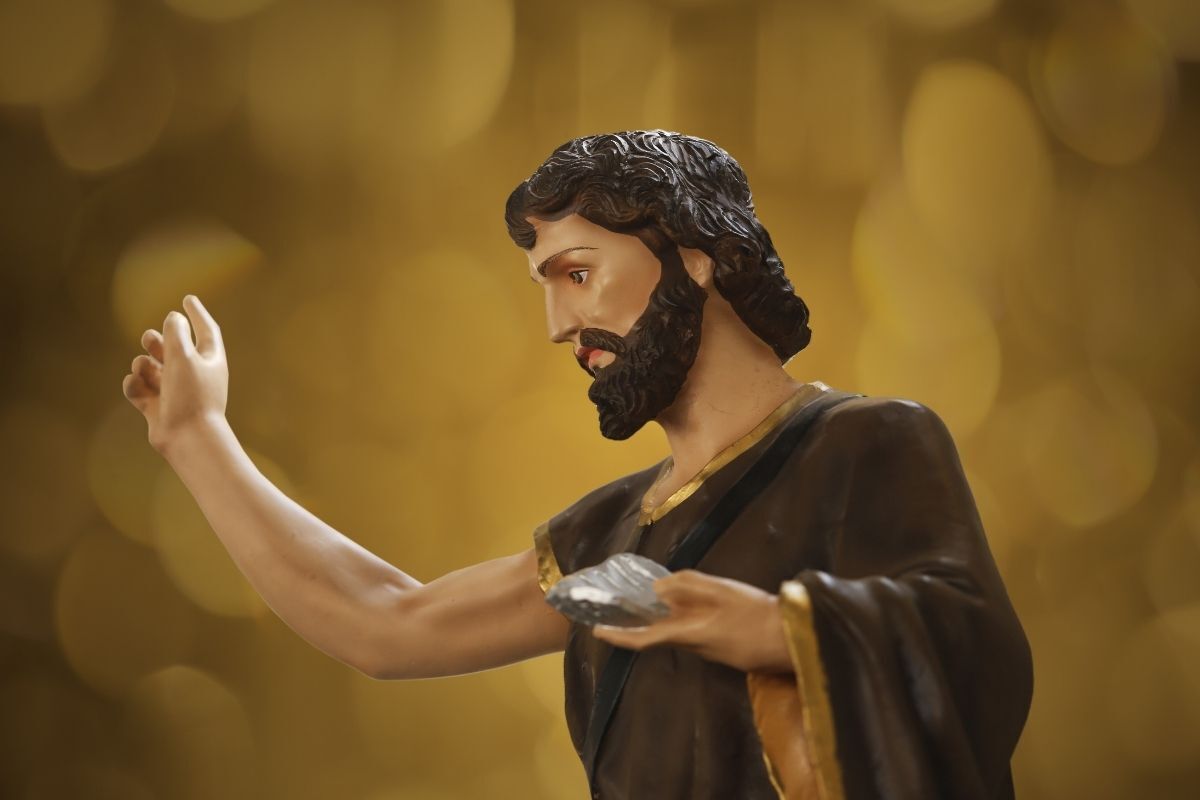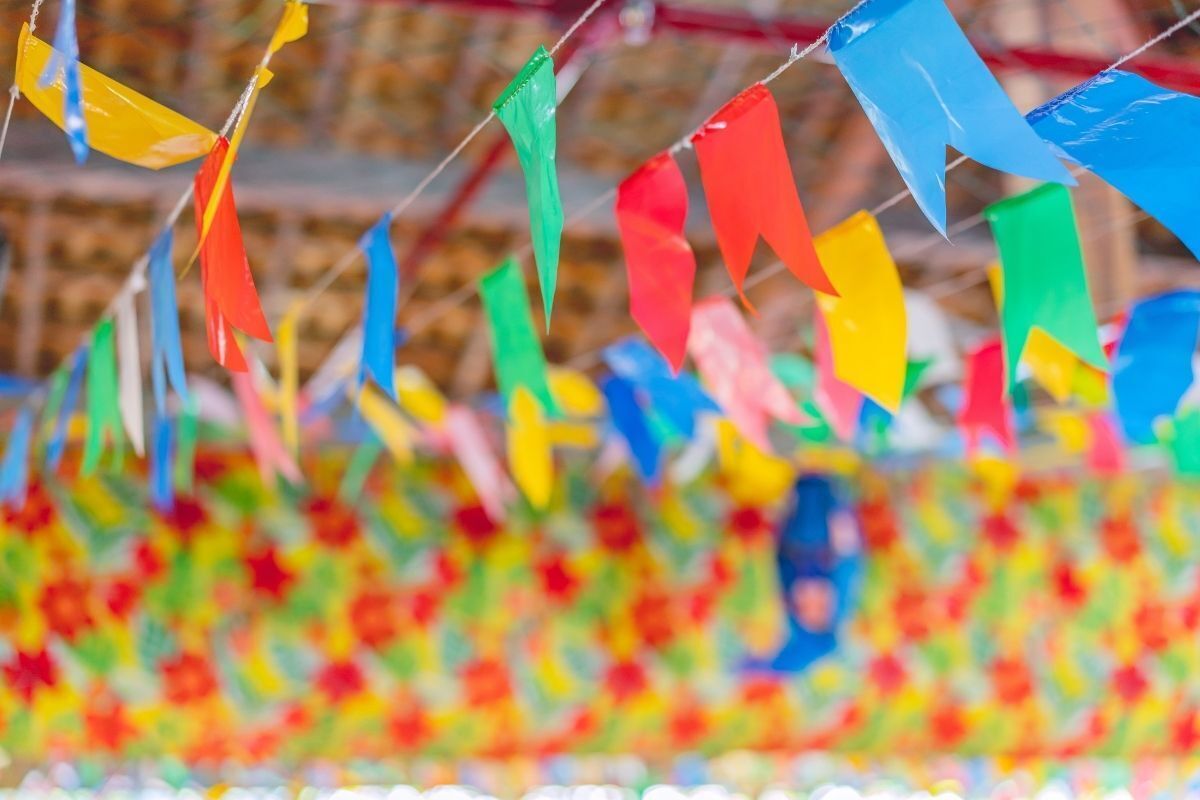Table of contents
When is St. John's Day celebrated?

Saint John's Day, a very celebrated festival throughout Brazil, especially in the Northeast, is celebrated on June 24th. At this time of the year, people get together to "pular o arraial", with a lot of forró, gymkhanas and typical foods that are very tasty.
Despite being a famous celebration, Saint John's Day is not a national holiday, but a state holiday, being a holiday in several Northeastern states due to the fact that the date is part of the Northeastern folk holiday.
St. John's Day is celebrated on June 24 because, according to the Catholic religion, this is the date of birth of St. John the Baptist. Thus, the celebration is the most widespread of the three June festivals, the other two being celebrated on the days of St. Anthony and St. Peter.
Therefore, the date has a very significant origin, not only because of the life story of St. John the Baptist, but also because the celebration has a pagan origin. If you want to know more about these facts, as well as know the interpretations of the bonfire, food, flags and other symbols of the June celebration, keep following.
History of Saint John

Commonly depicted with a cross-shaped staff, Saint John is very important to Catholicism because of his devotion to God and his closeness to Jesus Christ, so read below about his story and what he represents to the Catholic Church.
Origin of Saint John
Saint John was born in Israel, about six kilometers from the biblical capital Jerusalem, in a small town called Ain Karim, in Judea. Zacharias, his father, was a priest of the temple in Jerusalem, and Elizabeth, his mother, belonged to the religious society of the time "Daughters of Aaron" and was also a cousin of Mary, who would become the mother of Jesus.
John was chosen already in his mother's womb by God, and became a prophet who preached about the repentance of sins and the conversion of people through baptism. Therefore, he is called John the Baptist by the Holy Bible.
Birth of Saint John
The birth of St. John is considered a miracle, for his mother was barren and both she and his father were of advanced age. One day, while Zacharias was serving in the temple, the angel Gabriel appeared to him, announcing that his wife would become pregnant with a child who would be born full of the Holy Spirit and the power of the prophet Elijah, and his name would be John.
However, Zacharias thought that they were too old for this to happen and did not believe the angel. Therefore, Gabriel announced that the man would remain mute until the promise was fulfilled, that is, until the birth of John. So then time passed, with Zacharias not speaking, until St. John was born.
Saint Elizabeth and the Hail Mary
At the time when Elizabeth was already six months pregnant, the angel Gabriel visits Mary, engaged to Joseph, in Nazareth, in the province of Galilee. He announces to Mary that she will give birth to the Savior, son of God, and that he will be called Jesus. In addition, he also informs her that her cousin Elizabeth, despite being infertile and elderly, is pregnant, attesting to God's miraculous act.
After hearing the news, Mary hurried to visit Elizabeth, walking a long way, even though she was pregnant. When Mary greets her cousin, the baby moves in Elizabeth's womb, and she, very moved, says: "Blessed are you among women, and blessed is the fruit of your womb, Jesus. What a great honor for me to be visited by the mother of my Lord!" (Lk, 1:42-43).
Thus, St. Elizabeth and St. Mary the mother of Jesus were very happy, and the beautiful greeting uttered by Elizabeth eventually became part of the Hail Mary prayer.
The desert prophet
John grew up with the religious teachings of his parents, and when he reached adulthood, he felt he was ready. Thus, he began his life of preaching in the desert of Judea, going through various difficulties with much devotion and prayer to God.
He preached to the Israelites announcing the coming of the Messiah, and that the people should repent of their sins and adhere to the ways of the Lord. To mark this conversion, John baptized them in the Jordan River, and his popularity as a great prophet of God drew great crowds to attend his preaching.
Baptizing the Messiah
Because he was known as a great leader and prophet, the Jews asked if John the Baptist was not the Messiah himself, to which he replied, "I baptize you with water, but there is one coming who has greater authority than I, and to him I do not even deserve the honor of untying his sandal straps" (Lk 3:16).
Then, one day, Jesus, the true Messiah, left Galilee and went to the Jordan River to be baptized by John. John is astonished and asks, "I need to be baptized by you, and you come to me?" and Jesus replies, "Let it be so for now; we must do so to fulfill all righteousness." So John agreed and baptized the Savior. (Mt, 3, 13-15).
When Jesus comes up out of the water, the heavens open and the Holy Spirit, in the form of a dove, lands on him, at which point God is proud of his Son's action in deciding to be baptized by John the Baptist.
Arrest and death of John the Baptist
At the time of St. John, the governor of Galilee was Herod Antipas, a figure who was criticized by John the Baptist for his misdeeds in government and also for his affair of adultery with his sister-in-law, Herodias, who was the wife of his brother Philip.
Thus, because of Herodias, Herod had John bound and put in prison. For the woman, this was still not enough, for she hated the prophet and wanted to kill him, but she could not carry out this desire since Herod feared the reaction of the Jews and also John the Baptist himself, and so she protected him because she "knew that he was a just and holy man" and "liked to listen to him" (Mk, 6, 20).
Herodias then had her opportunity on Herod's birthday. On that day, the governor gave a great banquet, and then Herodias' daughter came in and danced for him and the guests, which pleased Herod very much. As a reward, he told the girl to ask for whatever she wanted, and he would give it to her.
She then speaks to her mother, who makes her ask for the head of St. John on a plate. Although distressed, for having sworn and for having been in front of the guests, Herod acceded to the request. Thus, the executioner goes to the prison and beheads John the Baptist, bringing his head as requested, which was delivered to the girl, who in turn, passed it on to her mother.
After hearing what had happened, St. John's disciples took his body and laid it in a tomb.
Devotion to Saint John the Baptist
As the last of the prophets, cousin of Jesus, very righteous and holy, herald of the coming of the Messiah and preacher of the truth no matter what the cost, St. John became the martyr of the Catholic Church from its inception and is celebrated every June 24. His martyrdom is remembered every August 29.
Thus, St. John the Baptist is very important in Catholic devotion, being the only saint with both birth and death days celebrated in the liturgical year. Only the nativity of John, Jesus and Mary are commemorated.
The Importance of St. John the Baptist
John the Baptist preached righteousness of ways, that all should be kind, that they should share with the needy, that foreign domination would end, and that the Savior would come to lead his faithful to the path of peace and justice.
Therefore, St. John was a preacher of hope and God's will, and the name John means "graced by God." Thus, he is an inspiration for people not to be overwhelmed by life's difficulties and disappointments, but to stay in the ways of the Lord and not lose hope and joy.
The day of St. John

St. John's Day, besides its Catholic origin, also has a pagan origin, being a very popular festival in Brazil. Read below more details about these curious facts.
The pagan festival
From very ancient times, early Europeans held festivals to celebrate their gods and the end of winter and the beginning of spring and summer.
In these parties, they thanked for the arrival of summer and asked the gods for plentiful harvests, which also explains the presence of corn in June parties, since the grain is harvested during this period of the year.
The Catholic Feast
When there was the rise of Catholicism in Europe, these ritualistic festivals were assimilated by the Church, so that they began to have a Christian religious meaning.
Therefore, three saints are celebrated at this time: Saint Anthony's Day, June 13, the date the saint died; Saint John's Day, June 24, his birthday; and Saint Peter's Day, June 29. On this date, there are also some people who celebrate Saint Paul, who died on the same day.
The celebration of Saint Anthony's Day is very traditional in Portugal, while Saint Peter's, the fisherman, is more common in coastal regions, where fishing is a recurring activity. However, in general, Saint John's Day is the most famous in Brazil.
In Brazil
June celebrations of a Christian nature have penetrated Brazilian culture because they were brought by the Portuguese during the colonial phase of the country. When they arrived, they saw that the indigenous people already performed, at the same period of the year, rituals to prepare the soil for planting so that harvests would be plentiful.
Soon after, the festivities also suffered influences from African cultures, which helps to explain the different manifestations of the festivities according to the regions of Brazil.
The popular party
As the June festivals originated in celebrations of popular saints and, in Brazil, have absorbed indigenous and African influences, their manifestations throughout the country are multicultural, and end up embracing the popular characteristics of these origins and places.
Thus, some forró instruments, such as the accordion, reco-reco and cavaco, for example, are part of the Lusitanian popular tradition, while the "caipira" clothes are due to the country people that inhabited the Brazilian Northeast and to the similarity with the clothes of the inhabitants of the rural area of Portugal.
Another factor that makes the party popular is its ability to update and adapt, as current bands and music blend with traditional ones in regional celebrations, always attracting many people.
Symbols of the feast of Saint John

In addition to the very curious story about the origin of the feast of St. John, the symbols of the celebration are also very interesting, so read on to find out more.
Bonfire
Bonfires were common in European pagan rituals due to the light, heat and ability to roast food. With the Christianization of the celebrations, the story arose that, after the birth of John, Isabel would have lit a bonfire to warn Mary. Thus, the bonfire remained as a tradition in June celebrations.
Flags
The flags and other paper ornaments also came with the Portuguese, as novelties that they brought from the Asian part of the planet. In them, the images of the three celebrated saints were nailed and dipped in water, so that the environment and the people would be purified. Thus, they became colorful and smaller, and until today they decorate the parties.
Balloons
Like the flags, the balloons are also Asian novelties brought by the Portuguese, and served to warn everyone of the beginning of the party. In Portugal they are still released, however, in Brazil, they are prohibited due to the risk of fire and serious injury.
Quadrilha
The quadrille originated from the French quadrille, an exquisite countryside dance. Famous among the European elites, and later among the Portuguese and Brazilian elites, it ended up spreading among the population over the years, especially those in rural areas.
Thus, it has undergone some transformations, such as gaining more peers and the joyful rhythm, and today it is free and stripped down.
Food
Because of its harvest at this time, there are many party dishes that are made of corn, such as popcorn, corn cake, canjica and pamonha. Other typical dishes are cocada, quentão, pé-de-moleque and arroz-doce. Finally, depending on the region, more dishes are prepared and enjoyed by people.
Is St. John's Day still an important religious date for Brazil?

The June festival of São João is very important for the country, because besides providing the celebration of local cultures, it still lights up the religiosity by reviving the memory and prayers of São João.
Thus, besides the joyful character of the feasts, the attention turned to the Catholic saint becomes special for the faithful, as they recall the history of Saint John and his preaching, so that people can be happy, hopeful and grateful for all his good and inspiring teachings.

